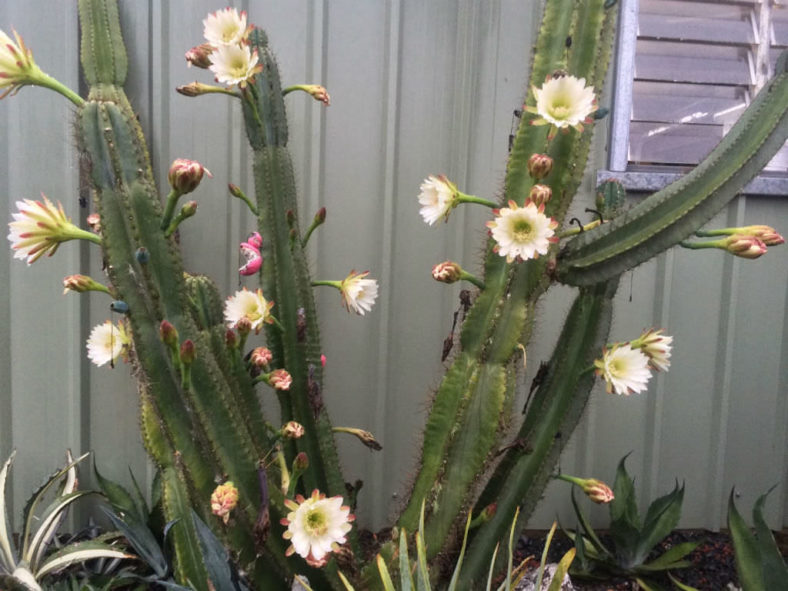The easiest way to propagate columnar cacti (Cereus, Pachycereus, Cephalocereus, etc.) is by cuttings. Some cuttings are growing tips, while others are stem sections without growing tips. The same methods can be applied to both.
When you receive your cutting, it may be freshly cut, or it may have been cut a while ago. If you do not know how long it has been cut, it is advisable to cure the ends by leaving your cutting lying on its side in a dry, shady (but well-lit) place for 2 to 3 weeks at least. Place it where it will not be damaged or exposed to the sun or rain. Once the ends are cured, they usually become pretty hard and cave in a little. They may also start to flake some dry layers of tissue, and some bulging may begin under the surface near the edges.
Depending on the time of year and the position the cactus was placed in, it may have already started putting out root nodes by this time. It does not matter where these are. If they are in the right place, they will be encouraged to continue growing in the following steps; however, if they are not, they will likely dry out. This does no damage to the plant.

There are many ways to root cacti, but all of them should follow a few simple rules. First, the medium must be suitable for growing cacti and be sterile for best results. Heat on a tray in the oven at over 392°F (200°C) for 1 hour (perlite is already quite sterile and does not need special treatment).
Planting of the cutting is best done when they are actively growing (not in winter). Do not overwater. Cacti will rarely die from a lack of water (they store several months' worth) but frequently from overwatering.
The most professional method is to root your cutting in perlite. This has the advantage that the cutting can be placed onto the dry perlite bed as soon as it is cut and can undergo drying. Once the ends are well cured, the cutting can be partly submerged into the perlite in the desired position. Choosing to place your cutting sideways or upright is a matter of choice. If placed sideways, a tip cutting will bend upwards at the tip and may also produce side shoots. Side rooting is preferable because it allows for the development of more root fibers, resulting in the plant receiving more nutrients in a shorter development period and increasing new growth.
The cutting and the surrounding perlite should then be watered. Once watering is started, the tray or pot should be placed in a full sun position. The perlite should not contain any vermiculite (a popular hydroponic mixture) as it retains too much water and should be watered every few days. The tray or pot containing the perlite should never sit in a puddle of water and be entirely free draining. After a few weeks, the cutting will produce several roots and can be transplanted to a more nutritious medium, such as potting or cactus mix.
To transfer the cutting, do not shake off the perlite. Transfer the whole rootball with as much perlite attached to it as possible. Place the new medium at the bottom of the pot and also around the rootball, with only a thin layer over the top. This will ensure that growth is not interrupted and reduces the risk of damaged roots being affected by diseases. After repotting, do not water for 5 to 10 days and protect from rain. This is to reduce the risk of diseases.
Many of the columnar cacti respond well to fertilizing. However, cacti should never be fertilized in winter.
Source: shaman-australis.com.au
Links
- Succupedia: Browse succulents by Scientific Name, Common Name, Genus, Family, USDA Hardiness Zone, Origin, or cacti by Genus